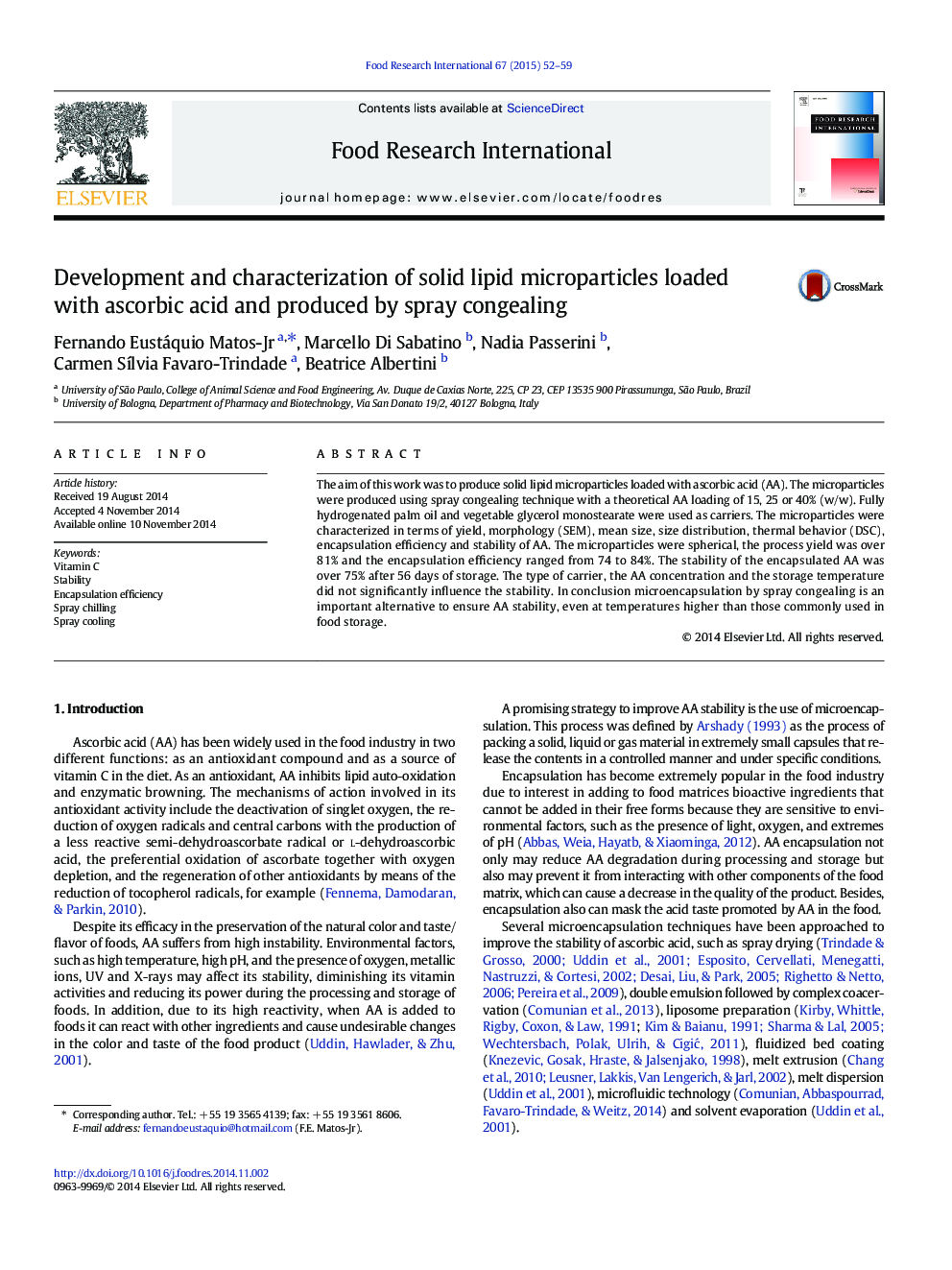| Article ID | Journal | Published Year | Pages | File Type |
|---|---|---|---|---|
| 6396008 | Food Research International | 2015 | 8 Pages |
â¢Spray congealing allows the production of microparticles with high loading of AA.â¢Microparticles produced by spray congealing confer high stability to AA.â¢Particle size influenced the encapsulation efficiency.â¢Yield of the process by spray congealing is high compared with other techniques.
The aim of this work was to produce solid lipid microparticles loaded with ascorbic acid (AA). The microparticles were produced using spray congealing technique with a theoretical AA loading of 15, 25 or 40% (w/w). Fully hydrogenated palm oil and vegetable glycerol monostearate were used as carriers. The microparticles were characterized in terms of yield, morphology (SEM), mean size, size distribution, thermal behavior (DSC), encapsulation efficiency and stability of AA. The microparticles were spherical, the process yield was over 81% and the encapsulation efficiency ranged from 74 to 84%. The stability of the encapsulated AA was over 75% after 56Â days of storage. The type of carrier, the AA concentration and the storage temperature did not significantly influence the stability. In conclusion microencapsulation by spray congealing is an important alternative to ensure AA stability, even at temperatures higher than those commonly used in food storage.
